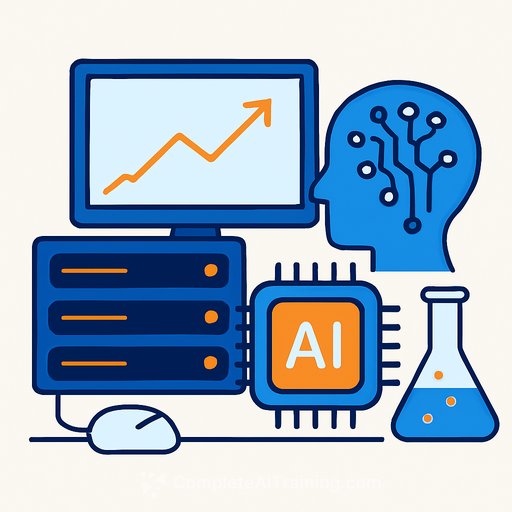SLAS Technology Volume 33: Advances in Life Sciences Discovery and Technology
Literature Highlights
The latest SLAS Technology issue features insightful reviews on key research advances in biotechnology, artificial intelligence applications in science, and nanotechnology. The Literature Highlights column offers a concise overview of impactful studies shaping life sciences research and development.
Original Research
Enhanced High-Throughput Embryonic Photomotor Response Assays in Zebrafish Using a Multi-Camera Array Microscope
This study validates the Kestrel™ imaging platform, a 24-camera system capable of capturing high-resolution video (9.6 µm) at over 10 Hz across 96-well plates. It addresses previous limitations in zebrafish-based drug and toxicology screening by enabling simultaneous monitoring of multiple embryos with improved speed and precision.
Multi-Model Machine Learning Framework for Lung Cancer Risk Prediction
Evaluating nine machine learning algorithms on 2,000 patient records, this research predicts lung cancer risk using 34 demographic, behavioral, and hematological parameters. Ensemble and regularization techniques delivered the strongest performance, supporting integration into electronic health record systems for early risk stratification.
PRIMDEx: Prototyping Rapid Innovation of Microfluidic Devices
PRIMDEx introduces a hybrid manufacturing workflow combining 3D printing with rapid injection molding. This approach overcomes cost, time, and flexibility challenges inherent in traditional microfluidic device fabrication, enabling faster and more adaptable prototyping suited for iterative biotech and biomedical research.
Magnetic Nanoparticles-Based Targeted Drug Delivery for Tumor Pain Management
The study presents a green-synthesized, pH-responsive transdermal system (catHEC·FA@SPIO) that delivers analgesics via magnetic nanoparticles to patients with nasopharyngeal carcinoma. Results show superior pain relief, lowered anxiety and depression, minimal cytotoxicity, and 94% patient satisfaction compared to conventional methods.
Explainable Clinical Diagnosis Using Optimized Fine-Tuned ConvNeXt Models for Monkeypox Classification
Fine-tuned ConvNeXt models optimized with AdaFactor achieved 99.9% accuracy and 94% on monkeypox disease classification. This method outperforms traditional convolutional neural networks while reducing computational costs, providing a practical tool for clinical diagnosis.
Titanium Surface Functionalization with Calcium-Doped ZnO Nanoparticles for Hard Tissue Implants
This research developed calcium phosphate-based coatings enhanced with calcium-doped ZnO nanoparticles on titanium implants. The coatings exhibit strong antibacterial activity against Staphylococcus aureus biofilms and promote tissue integration, offering a cost-effective solution to reduce implant failures that carry high treatment costs.
Nomogram Model for Predicting Rebleeding in High-Risk Peptic Ulcer Patients
Using Lasso regression, the authors created a nomogram to predict rebleeding risk in high-risk peptic ulcer bleeding patients. Six predictors were identified: diastolic blood pressure, hematocrit, blood transfusion volume, Glasgow-Blatchford score, endoscopic findings, and mechanical hemostasis, aiding clinical decision-making.
Sample Preparation Using Microbial Pattern Recognition Proteins and Magnetic Bead Ratcheting
This study demonstrates a semi-automated flow-through platform that uses paramagnetic beads to isolate 18 types of bacteria and viruses from diverse samples in under 30 minutes at low concentrations. It facilitates downstream PCR analysis and addresses bottlenecks in infectious disease diagnostics.
Special Issues in Focus
- High-Throughput Mass Spectrometry in Drug Discovery: Research explores mass spectrometry technologies that overcome traditional LC-MS limitations, enabling ultrafast, label-free screening useful for hit identification and compound library validation.
- Bio-Inspired Computing and Machine Learning Analytics for Mental Well-Being: This issue presents innovations applying bio-inspired computing and machine learning in life sciences to support medical assistive environments and promote patient independence.
- NexusXp: The Connected Lab: Focused on lab automation, this special issue investigates emerging technologies and concepts shaping the future of laboratory environments.
- Biomedical Imaging: New Frontiers in Molecular and Cellular Visualization: Featuring advances like AI integration and quantum imaging, this issue highlights technologies improving resolution, sensitivity, and data processing in biomedical imaging.
This volume of SLAS Technology is accessible at SLAS Technology.
SLAS Technology focuses on scientific and technical advances that improve life sciences research, drug delivery, diagnostics, biomedical imaging, and personalized medicine. The journal serves as a platform for academic, industry, and government researchers dedicated to advancing life sciences discovery and technology.
SLAS (Society for Laboratory Automation and Screening) is an international professional society committed to fostering collaboration and knowledge exchange among life sciences researchers and laboratory automation developers.
SLAS Technology: Translating Life Sciences Innovation
2024 Impact Factor: 3.7
Editor-in-Chief: Edward Kai-Hua Chow, PhD, KYAN Technologies
Your membership also unlocks:





